Explorations of Elementary February Newsletter
February was a month full of science experiments in our classroom. While we conduct experiments each month, these experiments seemed to be class favorites. We began the month with an experiment to determine if beans are monocot or dicots and ended the month studying the cooling process of the body. In our anatomy lessons, some students continued their study with adding information about the brain and spinal cord, while others put together a child-sized skeleton and labeled its parts. In Biology, we studied a food web and the interconnectivity of all things on Earth. These name labels are the best for both scholar supplies and projects.
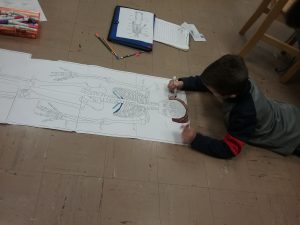
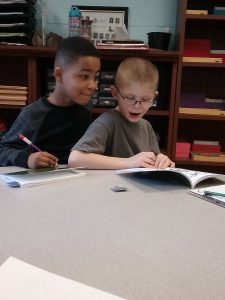
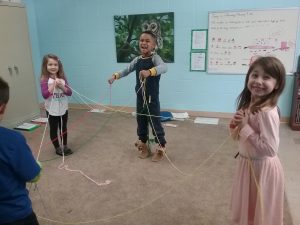
For our experiment about monocots and dicots, we used dried cannellini beans. We used two beans for each student. We put one bean in a damp paper towel and hung them in a sunny window to try to grow. We also did an experiment to try to sprout a seed using the carbon dioxide and saliva in our mouths. We had to soak the beans overnight in a cup of water, then the next day we placed the beans under our tongues. We had to keep our mouths closed for 30 minutes! Some beans were sprouted the next day, some a few days later, and some not at all. From the growth of both sets of beans, we determined that beans are dicots.
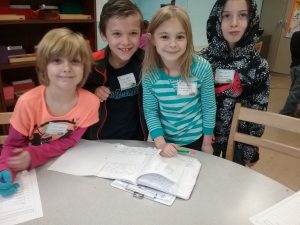

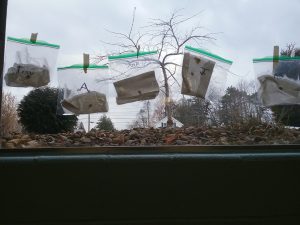
All students participated in our Human Body: Cooling Process experiment. We used our indoor thermometer for the experiment. After waiting for the thermometer to reach room temperature, we soaked the bulb in rubbing alcohol. We then took turns blowing on the bulb of the thermometer. After about 15 puffs of air, we noticed a drop in the temperature. We discussed that this is similar to our body producing sweat. Blowing on the bulb made the liquid rubbing alcohol change to gas and evaporate, taking some heat with it. Sweat on our bodies also takes heat away from our skin. Students have tried this experiment over and over. The most drastic drop in temperature was 4 degrees!
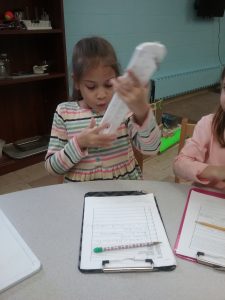
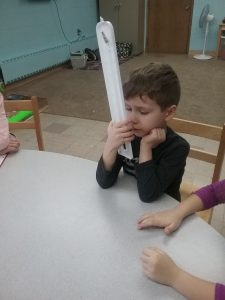
In preparation of our Elementary World’s Fair, we dove right into our 14-Point Study of a country of each child’s choice. Throughout the month, we have listened to traditional music from each country during our research. Students researched 14 different topics like regions, climate, food, invasions, flora, and fauna. Students recorded all of this information on note cards. The next step is writing their research paper, complete with title page and bibliography. Students will then create a trifold board to display their findings. Make sure to stop by our World’s Fair on Tuesday, March 7, at 6 pm.
Our second years continued their study of geographic features and rocks by forming different features out of clay. The students chose geographic features that are located in their country for the World’s Fair. They have painted their features and will have them on display for you at our event!

Our students studying the body focused on the brain and spinal cord this month. We learned the different parts of the brain and what they control without our body. We learned what the spinal cord helps us do and how it works with the brain. We created a spinal cord model using yarn and paper vertebrae. Students have continued adding their research to their body model.
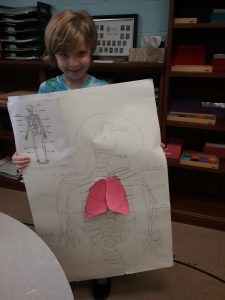
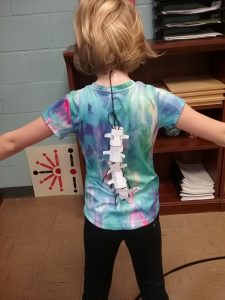
Two of our students have created a book club for our class. At Community Meeting, they shared their idea, the rules for the club, and asked who would like to sign up. Each Tuesday and Wednesday, our students meet from 9:00-9:30 for Book Club. They vote on which book to read and take turns reading. After reading, they discuss what they just read and what might happen next. This group gives students the opportunity to take on different social roles, which is a need Elementary-aged children have. Being in different groups and clubs, having different roles in those clubs, and following through with the responsibility of being a member prepares children for different work and social situations they will experience as older children and adults.
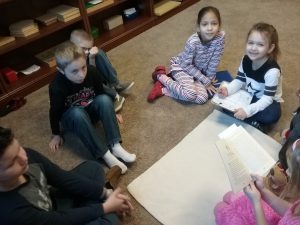
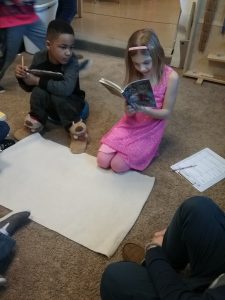
Kernel shed again this month! He has grown about 14 inches since we first got him in the fall. He is now 22 inches long and eats three mice each week. Our students enjoy petting him and watching him grow.
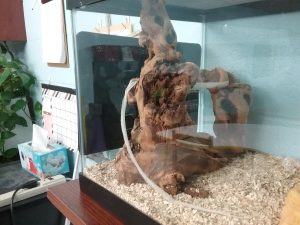
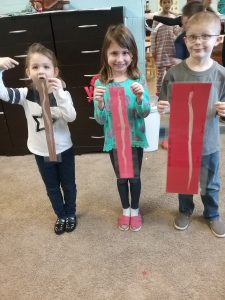
For our Valentine’s Day Party, we enjoyed cooking together we even got the best utensils for it from the Ivy and Wilde homeware store online. We made rolled out dough, spread on sauce, sprinkled cheese, and added toppings before baking our heart-shaped pizzas. We prepared our fruit by washing and chopping grapes and strawberries for everyone to share. The most exciting part for everyone was making Rice Krispy treats. We melted our marshmallows and butter on the stove then mixed it together with our Rice Krispies cereal. The students enjoyed pressing it into the pan. After cooking together, some students washed dishes while others set the places at our tables. Sharing these chores helps students become responsible and caring of our environment and each other.


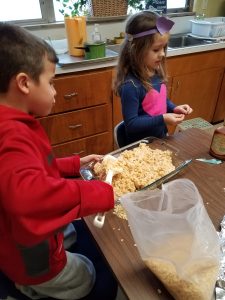
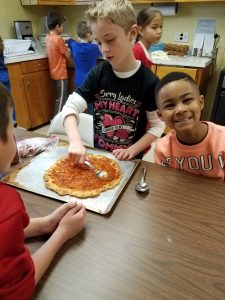
After our lunch together, we played games. We did a cupid’s arrow contest blowing q-tips out of a straw into a bowl. The team that got the most q-tips in the bowl in one minute was the winner! We also played a math facts “sumo wrestling” game. Two students stood on either side of a rug, back to back. Math facts were read to the students and the first to answer correctly took a step back. Once students were heel to heel, they used their bodies to move each other off the mat. Everyone thought this was a blast! After our games, the students went to gym. When they returned, we opened our valentines and shared treats with each other.
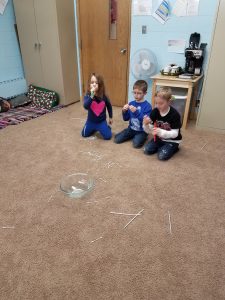

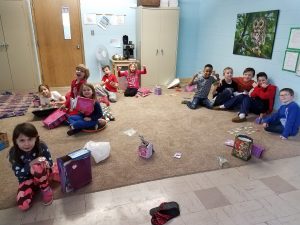
We are excited for March with all of our families!
